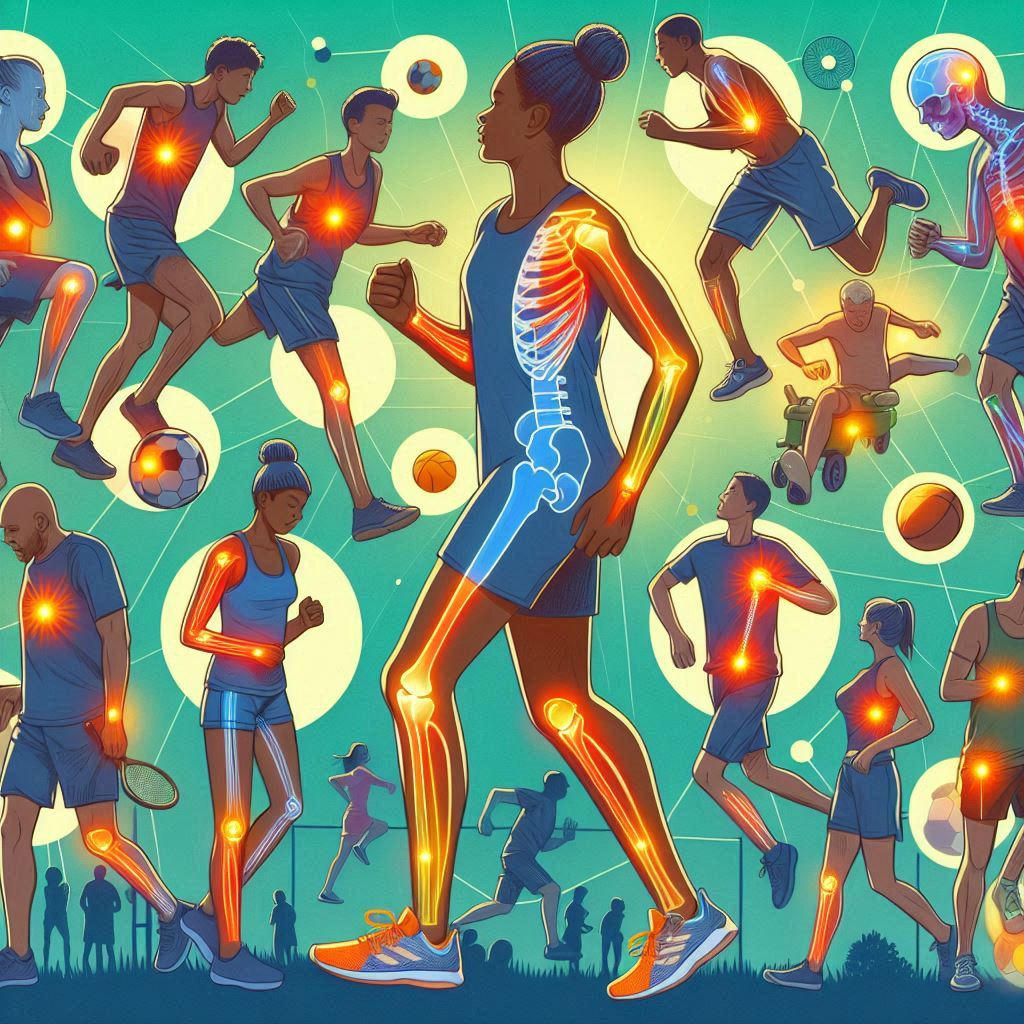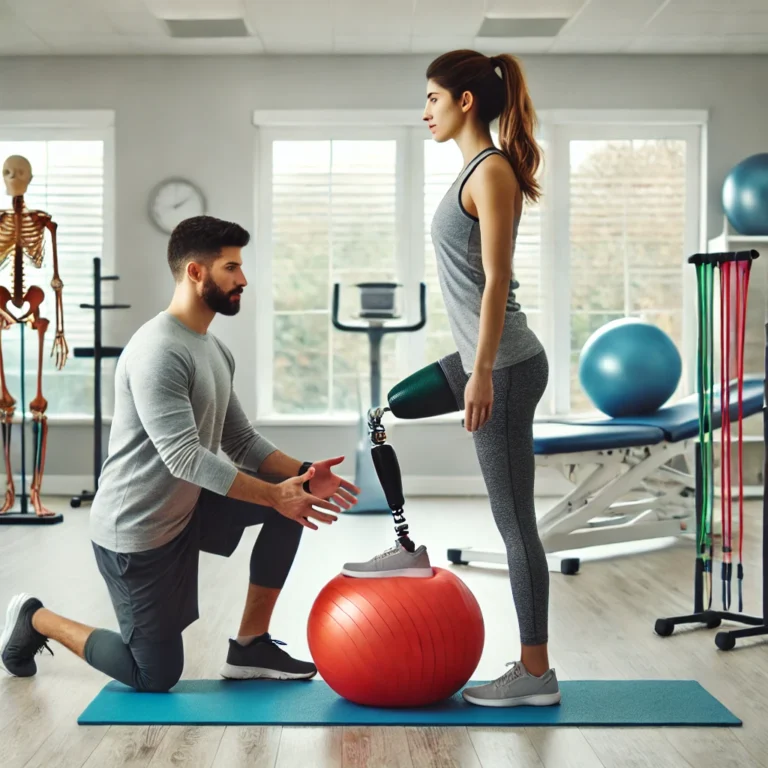Musculoskeletal injuries are a significant concern for individuals of all ages, with distinct challenges faced by children, adolescents, and adults. Active children and adolescents lead vibrant lives filled with physical activities, sports, and play. Their developing bones and muscles contend with unique risk factors, while adults may suffer from injuries related to lifestyle, overuse, or aging. This comprehensive blog post will explore musculoskeletal injuries, their common causes across different age groups, preventive measures, and tips for effective recovery.

What Are Musculoskeletal Injuries?
Musculoskeletal injuries encompass injuries to the bones, muscles, tendons, ligaments, and cartilage. These injuries can range from mild sprains to severe fractures, and they are commonly categorized into:
- Acute Injuries: Occurring suddenly, often due to a specific incident like a fall or an awkward movement. Examples include fractures, sprains, and strains.
- Chronic Injuries: Developing over time, often due to repetitive motion or sustained pressure on specific body parts. Conditions such as tendinitis, bursitis, and stress fractures fall into this category.
Unique Risk Factors for Musculoskeletal Injuries in Children and Adolescents
Children and adolescents are not merely “small adults.” Their growing bodies have characteristics that influence the types of injuries they may experience:
- Immature Bone Structure: The growth plates (physes) in children’s bones are still developing, making them more vulnerable to injury. These areas are softer and weaker than fully matured bones, increasing the risk of damage during physical activities.
- Active Lifestyles: Children’s natural inclination toward play and sports makes them more prone to both acute injuries (like fractures) and chronic injuries (from repetitive stress).
- Bone Remodeling: Children benefit from a robust ability to remodel and heal bones. This feature allows many common fractures, such as clavicle and torus fractures, to be managed conservatively.
Common Types of Musculoskeletal Injuries in Children and Adolescents
Here are some prevalent musculoskeletal injuries seen in active young individuals:
1. Clavicle Fractures
Common among youths involved in contact sports, clavicle fractures usually heal well with conservative treatment, including bracing and physical therapy.
2. Torus (Buckle) Fractures
These forearm injuries are caused by compression and typically result in a bulge without a complete fracture. Healing usually requires simple immobilization.
3. Radial Head Subluxation
Often occurring when a caregiver pulls on an extended arm, this injury can typically be resolved quickly through a reduction technique.
4. Apophyseal Injuries
Conditions like Osgood-Schlatter disease affect growth plates at tendon attachments and can often be managed nonoperatively with rest and physical therapy.
5. Osteochondritis Dissecans and Other Osteochondroses
These involve cartilage separation and may require ongoing monitoring and, in some instances, surgical intervention based on the severity and persistence of symptoms.
For Information You Can Visit Here
Common Causes of Musculoskeletal Injuries in Adults
For adults, the causes of musculoskeletal injuries are often related to lifestyle factors:
- Sports and Physical Activities: Improper training or warm-up can lead to injuries, especially in high-impact sports.
- Overuse: Repetitive activities without adequate rest can result in chronic injuries common among athletes, musicians, and those with physically demanding jobs.
- Poor Posture: Maintaining improper posture while sitting or standing can put stress on muscles and joints.
- Falls: Slip and fall incidents are a leading cause of musculoskeletal injuries in adults, particularly among older individuals.
- Aging: As we grow older, our bones become weaker, leading to increased susceptibility to fractures and other injuries.
Preventing Musculoskeletal Injuries
Preventing musculoskeletal injuries involves a combination of strength, flexibility, and awareness, applicable to all age groups. Here are effective strategies:
- Strength Training: Regular strength exercises help build supportive muscle around joints, reducing injury risk.
- Flexibility Exercises: Practices such as yoga and Pilates can be highly beneficial.
- Proper Technique: From exercising to lifting heavy objects, using the correct technique is essential. Engaging with a coach or trainer can help improve form.
- Warm-Up and Cool Down: Always warm up before physical activities and cool down afterward to help prevent stiffness and injuries.
- Wearing Appropriate Gear: Proper footwear and protective equipment should be used during sports and physical activities.
- Creating a Safe Environment: Reducing hazards at home and in the workplace can minimize the risk of slips and falls.
Management and Recovery from Musculoskeletal Injuries
When treating musculoskeletal injuries, proper management is vital for recovery and preventing long-term complications. Here are some key points to consider:
- Immediate Care: For acute injuries, the RICE method—Rest, Ice, Compression, and Elevation—should be utilized to reduce swelling and pain.
- Conservative Treatment: Many injuries can be managed nonoperatively with a focus on immobilization, physical therapy, and a gradual return to activity.
- Regular Monitoring: Chronic conditions like osteochondritis dissecans require frequent monitoring to evaluate recovery and determine if surgical intervention is needed.
- Education: Teaching children, parents, and coaches about injury prevention strategies—such as proper warm-up techniques and recognizing signs of overuse—can significantly reduce injury risks.
Conclusion
Musculoskeletal injuries represent a significant health concern across all age groups, but understanding the unique characteristics, causes, and treatment strategies can guide effective management. By prioritizing injury prevention, early intervention, and proper recovery techniques, we can help children, adolescents, and adults lead healthier, more active lives while minimizing the risk of long-term complications.
If you found this information valuable, please share this blog with fellow parents, coaches, and anyone involved in sports or physical activities. Together, let’s keep our communities informed and proactive about musculoskeletal health!
Discover more from fuel for life
Subscribe to get the latest posts sent to your email.



